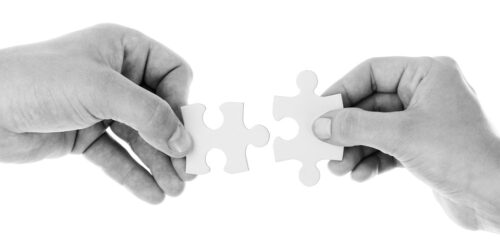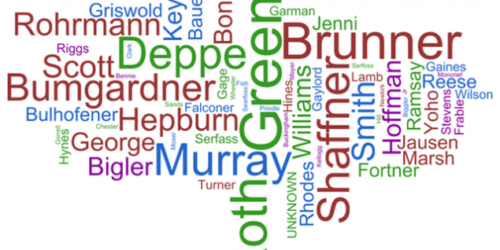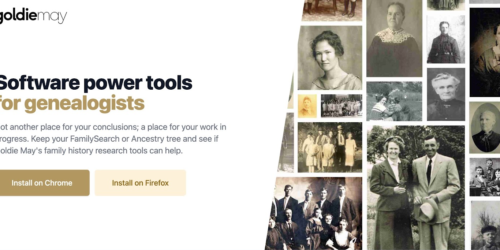 |
Many genealogists “inherited” their interest in genealogy from a relative: parent, a grandparent, or some other relation. I became interested in genealogy in a different way, but I still inherited a lot of documents and information from two great-grandmothers. One of my great-grandmother published an almost 700 page book about her ancestral lines. The other great-grandmother left a pile of boxes 5 feet tall with thousands of documents and letters. In addition, for over fifteen years, by visiting the then Family History Library in Salt Lake City, Utah, I accumulated a pile of photocopied family group records and pedigree charts over three feet tall. This all began about 42 years ago. Consistently, for all of those 42 years, I have been involved in correcting and augmenting the massive amount of information I initially received from my relatives and ancestors. Fortunately, all of that paper has now been incorporated into the FamilySearch.org Family Tree.
We know our ancestors were in London as early, possibly about 1700 to 1735. Perhaps in the future records will come into our hands to prove where they came from to England. We hope so. We have gathered names from various countries, cities, churches, through correspondence, &c.. and have them on hand, but cannot connect them to our line. We have also quite a number who are connected. Overson, Margaret Godfrey Jarvis. George Jarvis and Joseph George De Friez Genealogy. [Mesa?, Ariz.]: [M.G. Jarvis Overson], 1957.
The answer is I now have records dating back to the early 1600s in the Netherlands with this same family. This does not diminish or denigrate the work done in the early 1900s on my lines, but it does illustrate the fact that, in many cases, those “perfect genealogists” realized the limitations of their work which are now being considered to be perfect.
Now, I am in no way disparaging the work done by these wonderful people. I have always felt honored to have such diligent research that was done, but I now have a lot more information than they had access to and unless there are citations to actual historical records the traditional paper-based genealogy has little value. We are now coming to the end of the major transition that began in about 1970 and now those people who did the original work are all gone and most of their children are now gone. I have also seen a significant decrease in people bringing me questions about pre-computer information. Although, it is interesting that the use of this “ancestral” record is still haunting the FamilySearch Family Tree. You can see this phenomena by looking at almost any person in the Family Tree from New England and born before 1700. Here is a randomly chosen example.
You can see the list of changes by clicking on the image or going to John Kenyon I KNQL-7VM in the Family Tree. The reality here is that there is no controversy or question about this family and none of these changes have been made because new documents have been found. The last source added that pertained to this individual or family was added almost ten years ago, but the changes just keep coming from people who have outdated and unsubstantiated inherited records.







Thank you for this excellent article. I have lots of handed down genealogy that I refuse to put on FamilySearch until I can find documentation for what is written down. I look forward to your blog posts and always find them interesting, thought provoking, and just what I needed to see at that point in time.